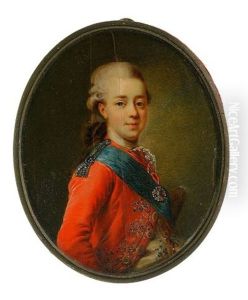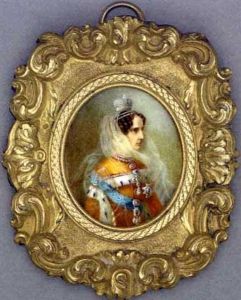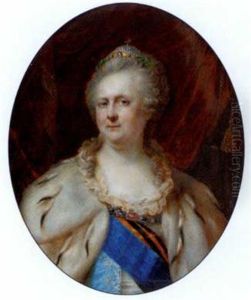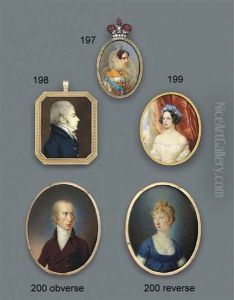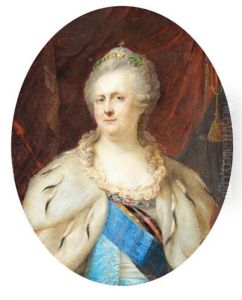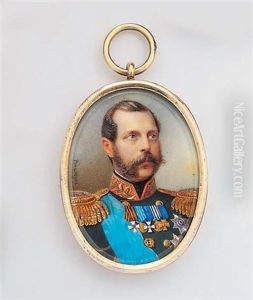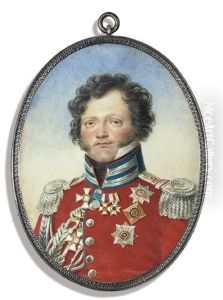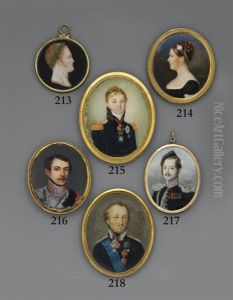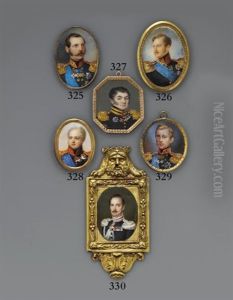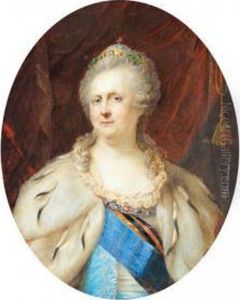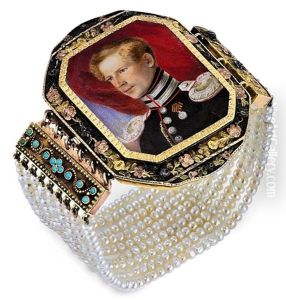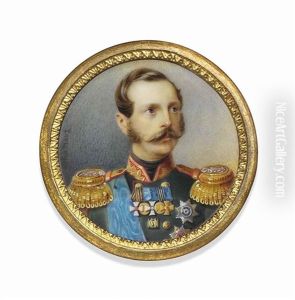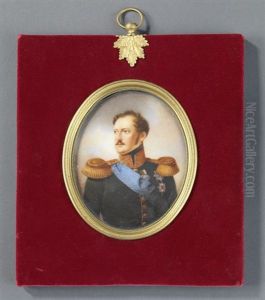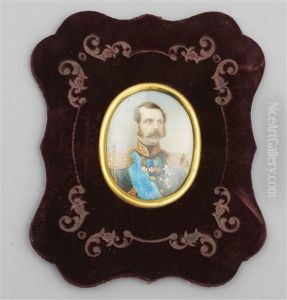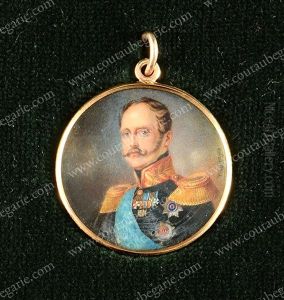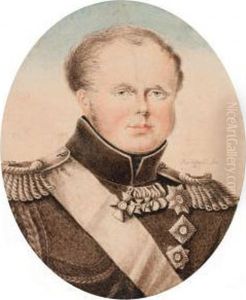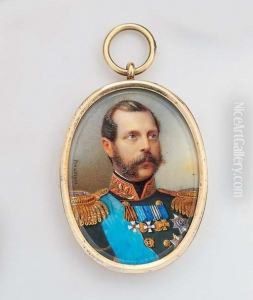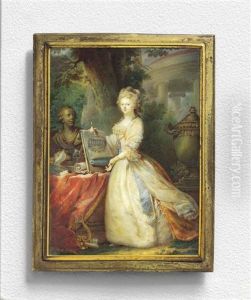Alois Gustav Rockstuhl Paintings
Alois Gustav Rockstuhl was a Russian miniaturist and painter of German descent, born on August 21, 1798, in the town of Ludwigsburg in the Duchy of Württemberg, which is now part of Germany. His father was a well-respected goldsmith, which provided Rockstuhl with an environment that was conducive to the development of his artistic talents from an early age. In 1812, his family moved to Russia, where he would spend the majority of his life and where his career would flourish.
In Russia, Rockstuhl studied at the Imperial Academy of Arts in Saint Petersburg, where he received a comprehensive education in the fine arts. He excelled particularly in miniature painting—a genre that requires meticulous attention to detail and skill in rendering small-scale portraits. Upon completing his studies, he was awarded a gold medal and a foreign scholarship by the Academy, which allowed him to travel to Europe for further artistic development.
During his travels in Europe, Rockstuhl honed his skills and was influenced by the techniques and styles of European miniaturists. Upon his return to Russia, he began to work at the Imperial court, gaining recognition and prestige. He became a sought-after artist among the Russian nobility and elite, creating miniature portraits and larger works that were admired for their elegance and lifelike quality.
Rockstuhl's work was characterized by its fine brushwork and attention to detail, with a particular talent for capturing the character and personality of his sitters. He was also known for his mastery of color and light, which he used to great effect in portraying fabrics and jewels with a high degree of realism. His miniatures often featured members of the Russian Imperial family and other prominent figures of the time, and they were highly prized as personal keepsakes and gifts.
Over the course of his career, Rockstuhl received numerous honors and became an academician at the Imperial Academy of Arts. He continued to work and teach in Saint Petersburg until his death on September 14, 1877. Today, Rockstuhl's miniatures are considered important examples of 19th-century portrait art and can be found in museum collections, including the Hermitage Museum in Saint Petersburg. His legacy lives on as a testament to the skill and artistry of miniaturists in the Russian Imperial court.
